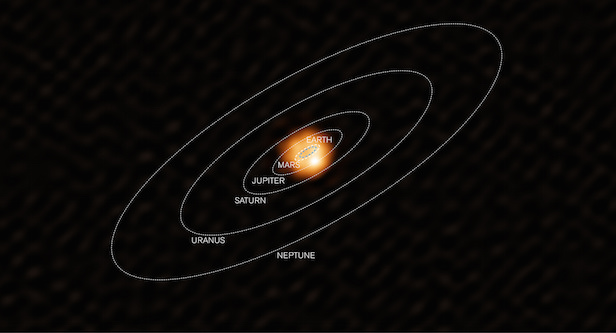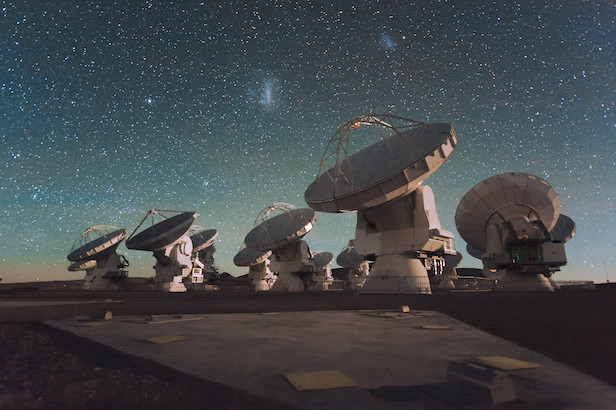New images of red giant star could reveal the Sun’s future
W Hydrae had the same starting mass as our nearest star, but it’s billions of years more evolved

The sharpest image of W Hydrae is overlaid by the relative orbits of our planets around the Sun, which emphasises the eventual size increase of a red giant star. Image credit: ESO/NAOJ/NRAO/W. Vlemmings
Astronomers have used the Atacama Large Millimetre/Submillimetre Array (ALMA) telescope to make the clearest image yet of an aging star that originally had the same mass of the Sun. W Hydrae, a red giant star, is a much more evolved version of the our nearest star, and any direct observations of it could tell us more about our Sun’s future.
W Hydrae lies roughly 320 light years in the constellation of Hydra (the Water Snake), and it’s described as an Asymptotic Giant Branch (AGB) star. This refers to a stage in a star’s life where it has surpassed it’s main sequence stage – in which the Sun currently resides – and the star itself cools, swells and continuously loses mass from its stellar winds.
“For us it’s important to study not just what red giants look like, but how they change and how they seed the galaxy with the elements that are the ingredients of life,” says Wouter Vlemmings of Chalmers University of Technology. “Using the antennas of ALMA in their highest-resolution configuration we can now make the most detailed observations ever of these cool and exciting stars.”
At this stage in a star’s life, the red giant will begin to produce more complex elements in its core, such as carbon and nitrogen. Astronomers estimate that this is what will occur to our Sun in roughly eight billion years. As W Hydrae originally had the same starting mass as our Sun, this is why astronomers want to learn as much as they can about how the star acts in its elderly phase.

ALMA is series of radio telescopes in the Atacama Desert of northern Chile. Image credit: ESO/C. Malin
The images provided by ALMA have resolved a perplexing component to W Hydrae. Scientists have observed the presence of a compact and bright spot; this spot provides evidence of a surprisingly hot layer of gas above the star’s chromosphere (the outer atmosphere).
“Our measurements of the bright spot suggest there are powerful shock waves in the star’s atmosphere that reach higher temperatures than are predicted by current theoretical models for AGB stars,” says Theo Khouri, also of Chalmers University of Technology.
Another possible explanation is that the star underwent a giant flare whilst the observations were made. In the name of thoroughness, scientists are now undergoing new observations using ALMA and other instruments. This will provide a much clearer picture of the stellar situation, including W Hydrae’s very perplexing atmosphere.
“It’s humbling to look at our image of W Hydrae and see its size compared to the orbit of the Earth,” explains Elvire De Beck, also of Chalmers University of Technology. “We are born from material created in stars like this, so for us it’s exciting to have the challenge of understanding something which so tells us both about our origins and our future.”
Keep up to date with the latest reviews in All About Space – available every month for just £4.99. Alternatively you can subscribe here for a fraction of the price!




